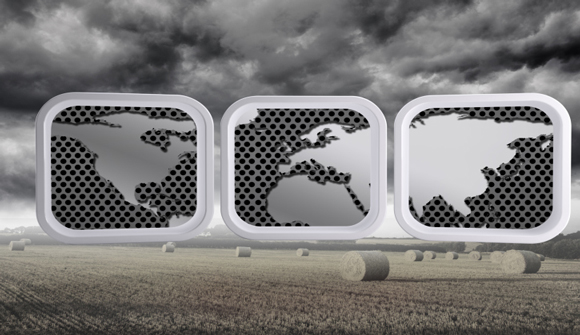
With the world growing increasingly warmer, experts have estimated that we are actually due to gain a great deal of farmland, even if the crop yield that that land could see may actually decrease. However, finding this land so that it can quickly be put to use remains a challenge. Now, two new global maps may provide some help in the search for fresh farmland. – Nature World News
Dominant Social Theme: We need to put more farmland into production and practice large-scale agriculture.
Free-Market Analysis: Is this sudden interest in mapping farmland a back-door justification for the advancement of Big Agriculture? Will it justify as well a sudden drop in food production and rising farmland prices across the board?
The idea of this article is that farmland must now be put into cultivation in large chunks since each farm may not itself be able to lift yield further. In other words, in the future if global warming changes the environment, there will be more acreage farmed and fewer crops harvested.
Here's more:
With the world growing increasingly warmer, experts have estimated that we are actually due to gain a great deal of farmland, even if the crop yield that that land could see may actually decrease.
However, finding this land so that it can quickly be put to use remains a challenge. Now, two new global maps may provide some help in the search for fresh farmland.
As if they haven't heard enough bad news already, researchers are now letting farmers know that the world's wheat yields are excepted decline in the near future, with the world standing to lose six percent of its wheat crop for every degree Celsius that the annual global temperature increases.
… The maps were released in the journal Global Change Biology, and offer two types of data that experts argue is essential for the search.
The first map was created using a great deal of international and vetted crowd-sourced data, showing global cropland percentages at one kilometer resolution for the year 2005. This data, cross-checked for accuracy and combined with pre-existing large-scale maps, created something researchers are claiming is more intergraded than anything else seen before.
"Current sources of information on cropland extent are not accurate enough for most applications," project leader Steffen Fritz, from the International Institute for Applied Systems Analysis (IIASA), explained in a statement. "The global cropland map is a low cost solution to fill this need."
This is certainly an accurate statement – that cropland information is not sufficiently available to allow for accurate conclusions. Nonetheless, the researchers that have "crowd sourced" these maps are confident that their methodologies will prove accurate.
Crowd sourcing when it comes to maps involves "a global network of citizen scientists looked at thousands of high-resolution images of land cover to determine whether farms are gaining or losing land."
We're a bit skeptical of this approach in large part because it starts with the supposition that global warming is real and that it is already having a significant impact on crops and land. We certainly grant the possibility this is so but we are also well aware of elite scarcity memes. Crops and water are "ground zero."
The article seems to be laying the groundwork for a future of scarce crops and cropland despite added acreage. This supports articles we've already written predicting food and water scarcity.
In the future, we'll surely see higher prices for food and cropland, and global warming will be wielded as a culprit … whether or not that's the reality.
From our perspective, this is dominant social theme is one that will continue to resonate because people are often willing to believe the worst when it comes to staple products and services.
It won't be hard to convince many that food costs more because there's less of it. And perhaps people will continue to accept that global warming is the culprit.

Food and farmland prices are being artificially inflated … and that's one trend in the near term that won't go away.
